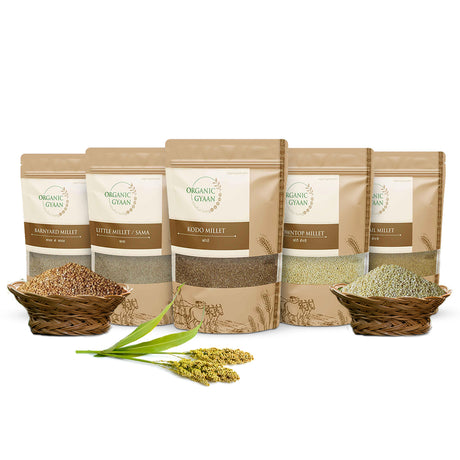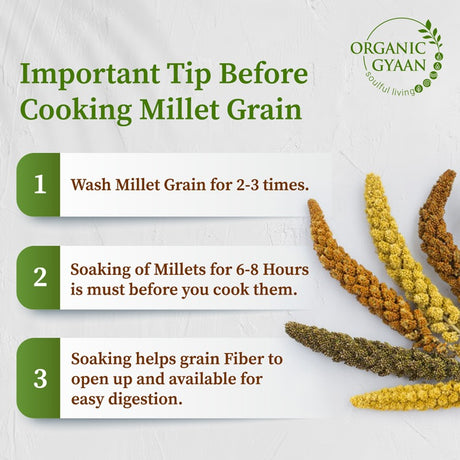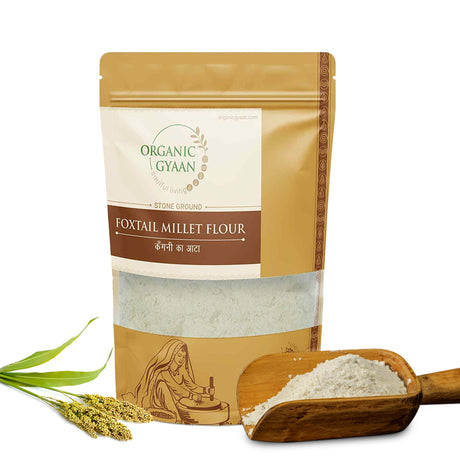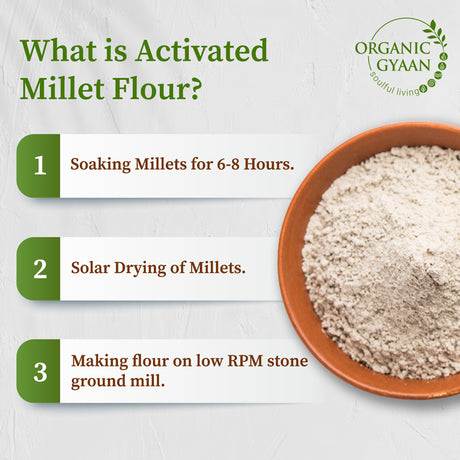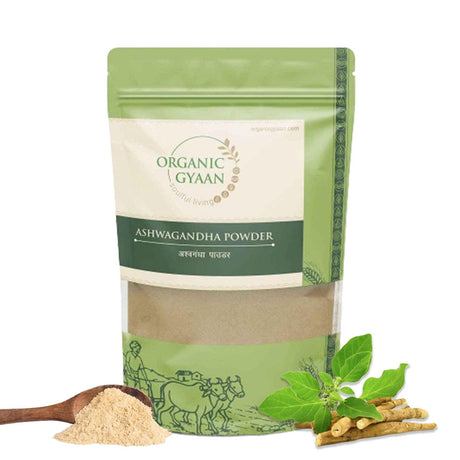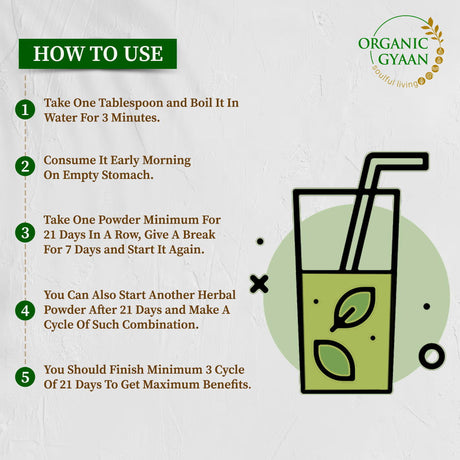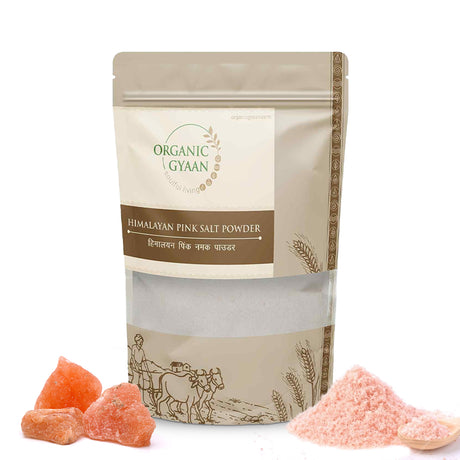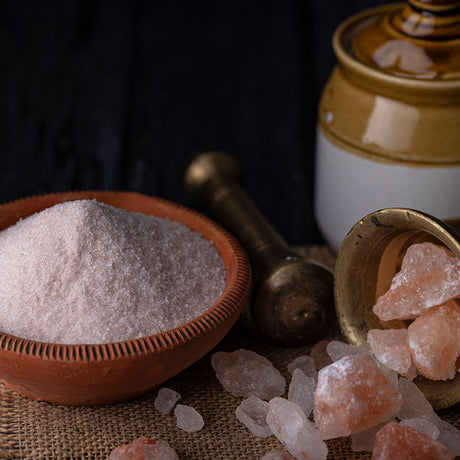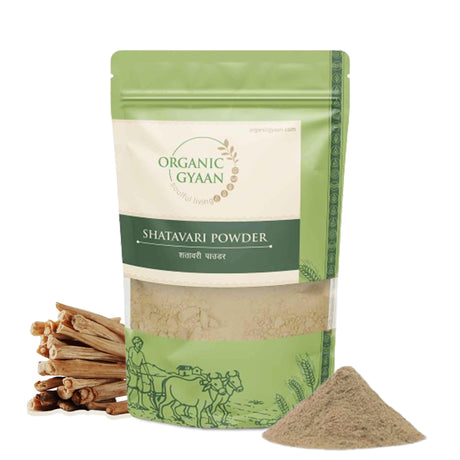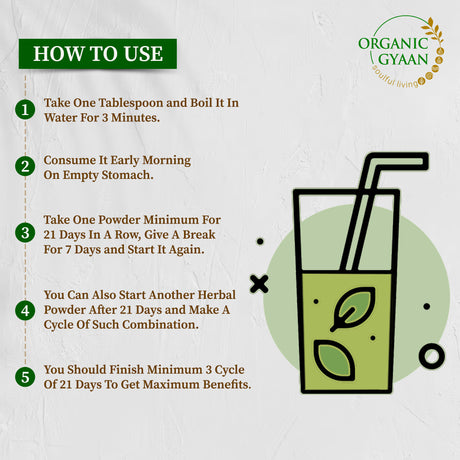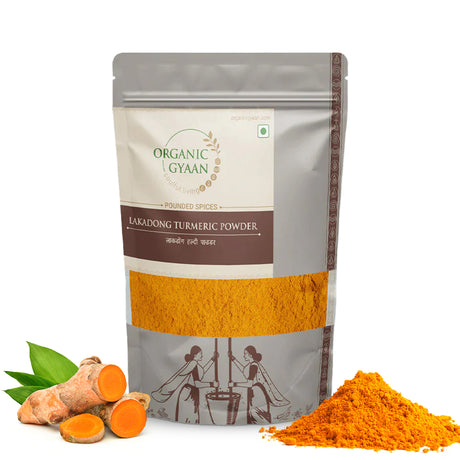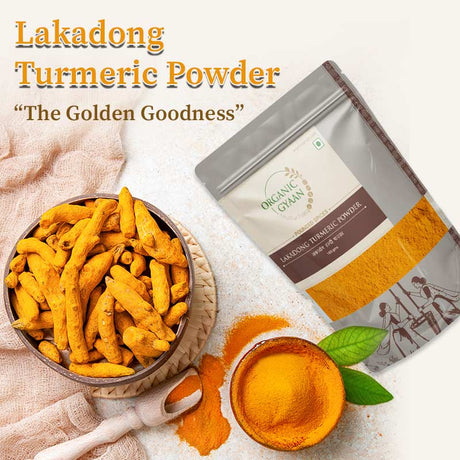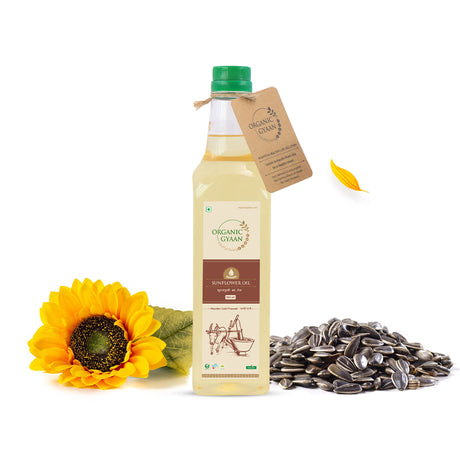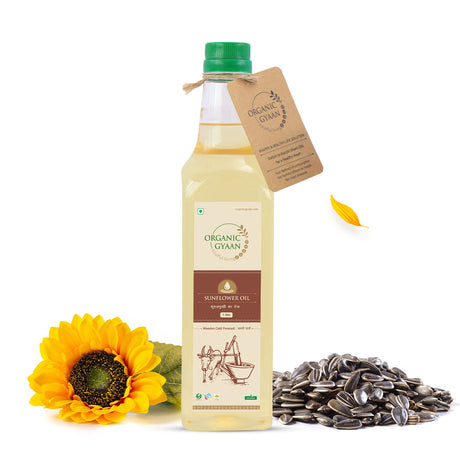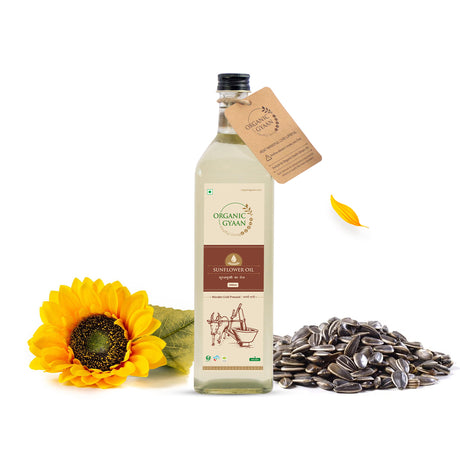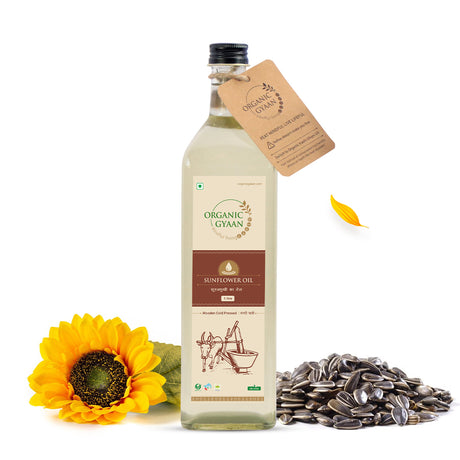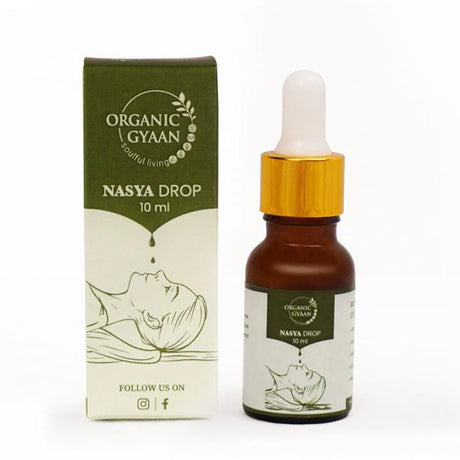गरीब मातीत भरभराट करणारे, कमीत कमी पाण्यात जगणारे आणि कृपेने हवामानातील बदलांशी लढा देणाऱ्या पिकाची कल्पना करा. बाजरीमध्ये प्रवेश करा, प्राचीन धान्ये एक स्मरणीय पुनरागमन करत आहेत, केवळ आमच्या प्लेट्सवरच नव्हे तर शाश्वत शेतीचे दिवाण म्हणून. हवामान बदलाच्या वाढत्या धोक्यात वाढत्या लोकसंख्येला अन्न पुरवण्यासाठी जग झगडत असताना, बाजरी प्राचीन आणि भविष्यवादी अशा दोन्ही प्रकारचे उपाय देतात.
शाश्वत शेतीमध्ये बाजरीचा उदय
बाजरी, ज्यामध्ये विविध लहान-बीज असलेल्या गवतांचा समावेश आहे, ही कठोर पिके आहेत जी कठोर पर्यावरणीय परिस्थितींशी लवचिकतेसाठी ओळखली जातात. या धान्यांची हजारो वर्षांपासून लागवड केली जात आहे तरीही गहू आणि तांदूळ यांसारख्या अधिक पाणी-केंद्रित पिकांनी त्यांची छाया केली होती. आज, शाश्वतता महत्त्वाची बनल्यामुळे, बाजरी जगभरातील शेती आणि आहारामध्ये त्यांचे योग्य स्थान परत मिळवत आहे.
मुख्य अंतर्दृष्टी आणि पर्यावरणीय फायदे
1. कमी पाण्याची आवश्यकता
गहू आणि तांदूळ यांसारख्या पारंपारिक धान्यांच्या तुलनेत बाजरी दुष्काळ-प्रतिरोधक आहेत, त्यांना लागवडीसाठी लक्षणीयरीत्या कमी पाणी लागते. हे वैशिष्ट्य रखरखीत आणि अर्ध-शुष्क प्रदेशात बाजरी अविश्वसनीयपणे मौल्यवान बनवते जेथे पाण्याची कमतरता ही एक गंभीर समस्या आहे. कमी पाण्याचा वापर करून, बाजरी केवळ मौल्यवान जलस्रोतांचे संरक्षण करत नाही तर ज्या भागात पाणी-केंद्रित पिके व्यवहार्य नसतील अशा भागात शेतीला परवानगी देतात. कमीत कमी पाण्याच्या इनपुटसह वाढण्याची त्यांची क्षमता शाश्वत कृषी पद्धतींशी उत्तम प्रकारे संरेखित होते, शेतीतील पाण्याशी संबंधित आव्हानांवर व्यावहारिक उपाय देते.
2. हवामान लवचिकता
बाजरीमध्ये दुष्काळ, उच्च तापमान आणि खराब जमिनीची सुपीकता यासह हवामानाच्या ताणांना जन्मजात लवचिकता असते. ही लवचिकता त्यांच्या अनुवांशिक विविधता आणि अनुकूली वैशिष्ट्यांमुळे उद्भवते, जे त्यांना कठोर पर्यावरणीय परिस्थितीत भरभराट करण्यास सक्षम करते जेथे इतर अनेक पिके अयशस्वी होतील. जागतिक हवामान बदलाच्या पार्श्वभूमीवर अन्नसुरक्षा सुनिश्चित करण्यासाठी बाजरीची हवामानातील परिवर्तनशीलतेला तोंड देण्याची क्षमता हा एक महत्त्वाचा घटक आहे. जसजसे तापमान वाढते आणि हवामानाचे नमुने अधिक अप्रत्याशित बनतात, बाजरी बदलत्या हवामानाशी जुळवून घेण्यास सक्षम पीक म्हणून उभी राहते, ज्यामुळे ते शाश्वत शेतीच्या भविष्यातील प्रमुख खेळाडू बनतात.
3. जैवविविधता आणि मातीचे आरोग्य
बाजरीची लागवड कृषी जैवविविधतेमध्ये महत्त्वपूर्ण योगदान देते, जी लवचिक शेती प्रणालीसाठी आवश्यक आहे. मातीची पोषक द्रव्ये कमी करणाऱ्या आणि जैवविविधता कमी करणाऱ्या मोनोकल्चरच्या विपरीत, बाजरी मिश्र पीक पद्धतीमध्ये उगवता येते, मातीचे आरोग्य सुधारते आणि विविध परिसंस्थेला चालना मिळते. बाजरी मातीची सुपीकता टिकवून ठेवण्यासाठी धूप रोखून, पाणी टिकवून ठेवण्यास आणि फायदेशीर सूक्ष्मजीवांना आधार देण्यास मदत करते. मातीचे आरोग्य सुधारण्यात त्यांची भूमिका शाश्वत शेती पद्धतींमध्ये त्यांचे महत्त्व अधिक अधोरेखित करते, संतुलित परिसंस्थेला प्रोत्साहन देते जे वनस्पती आणि प्राणी जीवनाच्या विस्तृत श्रेणीला समर्थन देते.
4. शेतकरी उपजीविकेला आधार देणे
बाजरी शेतकऱ्यांसाठी एक शाश्वत उपजीविकेचा पर्याय देतात, विशेषत: सीमांत आणि संसाधन-मर्यादित वातावरणात. पाणी, खते आणि कीटकनाशकांसाठी त्यांच्या कमी इनपुट आवश्यकता लक्षात घेता, बाजरी अल्पभूधारक आणि अल्पभूधारक शेतकऱ्यांना आर्थिकदृष्ट्या व्यवहार्य पर्याय प्रदान करते. हवामानाच्या धक्क्यांना संवेदनाक्षम असलेल्या भागात बाजरीची लागवड ही एक धोरणात्मक निवड असू शकते, ज्यामुळे शेतकरी समुदायांसाठी अन्न सुरक्षा आणि उत्पन्न स्थिरता सुनिश्चित होते. बाजरीच्या लागवडीला प्रोत्साहन देऊन, शाश्वत शेती उपक्रम शेतकऱ्यांना सक्षम बनवू शकतात, गरिबी कमी करू शकतात आणि ग्रामीण विकासाला हातभार लावू शकतात.
5. कार्बन फूटप्रिंट कमी करणे
खते आणि कीटकनाशकांसारख्या सिंथेटिक निविष्ठांसाठी किमान आवश्यकतेमुळे इतर अनेक पिकांच्या तुलनेत बाजरीचा कार्बन फूटप्रिंट कमी असतो. त्यांच्या लागवडीमुळे हरितगृह वायू उत्सर्जन कमी होण्यास हातभार लागतो, जो हवामानातील बदल कमी करण्यासाठी एक महत्त्वाचा घटक आहे. बाजरी शेती प्रणालीमध्ये समाकलित करून, शेतीचा एकूण कार्बन फूटप्रिंट कमी करणे शक्य आहे, ज्यामुळे ते अधिक टिकाऊ बनते. बाजरीचे पर्यावरणीय फायदे, त्यांच्या पौष्टिक फायद्यांसह, त्यांना एक पीक म्हणून स्थान देतात जे शाश्वत अन्न प्रणाली आणि पर्यावरण संवर्धनासाठी महत्त्वपूर्ण योगदान देऊ शकतात.
सहाय्यक तथ्ये आणि आकडेवारी
संशोधन असे सूचित करते की बाजरी भातापेक्षा 70% कमी पाणी वापरते आणि खतांचा जास्त वापर न करता खराब जमिनीत वाढू शकते. हे केवळ मौल्यवान जलस्रोतांचे संरक्षण करत नाही तर रासायनिक निविष्ठांवरील अवलंबित्व कमी करते, ज्यामुळे शेती अधिक टिकाऊ आणि पर्यावरणपूरक बनते.
शाश्वत शेतीमध्ये बाजरीची भूमिका एक्सप्लोर करणे
1. दुष्काळाचा प्रतिकार: बाजरीची पाण्याची कमतरता असलेल्या भागात वाढण्याची उल्लेखनीय क्षमता त्यांना वाढत्या कोरड्या हवामानात अन्न सुरक्षा सुनिश्चित करण्यासाठी एक महत्त्वपूर्ण पीक बनवते.
2. कार्बन फूटप्रिंट कमी करणे: रासायनिक खते आणि कीटकनाशकांच्या किमान आवश्यकतांसह, बाजरी कृषी उत्पादनाशी संबंधित हरितगृह वायू उत्सर्जन कमी करण्यास योगदान देते.
3. शेतकऱ्यांची उपजीविका वाढवणे: इतर पिके अयशस्वी झालेल्या सीमांत जमिनीत बाजरी वाढू शकते, ज्यामुळे आव्हानात्मक पर्यावरणीय परिस्थितीतही शेतकऱ्यांना उत्पन्नाचा एक विश्वासार्ह स्त्रोत मिळतो.
बाजरीच्या लागवडीला चालना देण्यासाठी कृतीयोग्य धोरणे
1. धोरण समर्थन: बाजरी लागवडीकडे जाणाऱ्या शेतकऱ्यांना सरकार आणि कृषी संस्था प्रोत्साहन आणि समर्थन देऊ शकतात.
2. संशोधन आणि विकास: उच्च-उत्पन्न, रोग-प्रतिरोधक बाजरीच्या जाती विकसित करण्यासाठी संशोधनामध्ये गुंतवणूक केल्याने त्यांचे आकर्षण आणखी वाढू शकते.
3. ग्राहक जागरूकता: बाजरीच्या आरोग्य आणि पर्यावरणीय फायद्यांबद्दल ग्राहकांना शिक्षित केल्याने मागणी वाढू शकते आणि अधिक शेतकऱ्यांना या धान्यांची लागवड करण्यास प्रोत्साहित केले जाऊ शकते.
द वे फॉरवर्ड विथ बाजरी
शाश्वत शेतीचे भविष्य बाजरीने उजळते. आपल्या ग्रहाचे जतन करण्याच्या गरजेसह वाढत्या लोकसंख्येच्या मागण्यांमध्ये समतोल साधण्याचा आपण प्रयत्न करत असताना, बाजरी हा एक उपाय म्हणून उदयास येतो जो अन्न सुरक्षा, पर्यावरणीय स्थिरता आणि शेतकऱ्यांसाठी आर्थिक व्यवहार्यता संबोधित करू शकतो.
निष्कर्ष
बाजरी ही केवळ भूतकाळातील धान्ये नसून ती खरोखरच भविष्यातील पिके आहेत. शाश्वत शेतीसाठी त्यांचे योगदान अमूल्य आहे, जे हवामानातील बदल कमी करण्यासाठी, पाण्याचे संवर्धन आणि जैवविविधतेचे समर्थन करण्याचा मार्ग देतात. जसे आपण हे प्राचीन धान्य स्वीकारतो, आपण अधिक टिकाऊ, लवचिक आणि निरोगी जगाचा मार्ग मोकळा करतो.
आपल्या आहारात बाजरीचा समावेश करून, त्यांच्या लागवडीला प्रोत्साहन देणाऱ्या धोरणांना समर्थन देऊन आणि त्यांच्या पर्यावरणीय फायद्यांबद्दलचा प्रसार करून शाश्वत भविष्याच्या दिशेने चळवळीत सामील व्हा. एकत्र, आपण फरक करू शकतो, एका वेळी एक धान्य.


